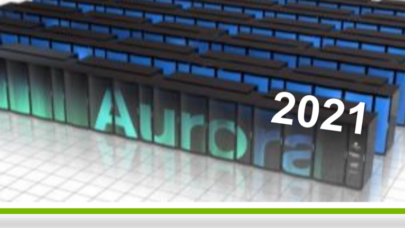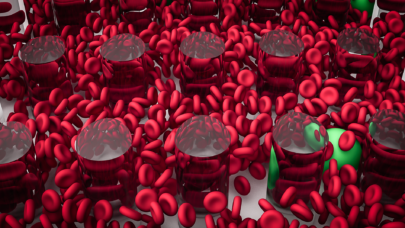
Aurora’s Troubles Move Frontier into Pole Exascale Position
October 1, 2020
Intel’s 7nm node delay has raised questions about the status of the Aurora supercomputer that was scheduled to be stood up at Argonne National Laboratory next year. Aurora was in the running to be the United States’ first exascale supercomputer although it was on a contemporaneous timeline with... Read more…

Titan Helps Shed Light on Membrane Lipids’ Multiple Roles
April 4, 2016
Lipid molecules are schizophrenic. One end likes to hang out with a charged crowd (think water); the other prefers neutral neighbors (think fats). Most of us re Read more…

Cray XK7 Titan Used to Simulate Complicated Blood Flow
October 14, 2015
A team of researchers from Brown University, ETH Zurich, the Universita da Svizzera Italiana (USI) and Consiglio Nazionale delle Ricerche (CNR) is using Americ Read more…

Why Iterative Innovation is the Only Path to Exascale
April 14, 2014
If we're out of "magic bullets" that can shoot across supercomputing space, shattering assumptions about how high performance computing operates efficiently at Read more…

NVIDIA Highlights GPU Progress on Titan Supercomputer
March 27, 2014
The GPU Technology Conference this week in San Jose offered plenty of material for the supercomputing set with a number of presentations focused on specific pro Read more…

- Click Here for More Headlines

Whitepaper
Transforming Industrial and Automotive Manufacturing
In this era, expansion in digital infrastructure capacity is inevitable. Parallel to this, climate change consciousness is also rising, making sustainability a mandatory part of the organization’s functioning. As computing workloads such as AI and HPC continue to surge, so does the energy consumption, posing environmental woes. IT departments within organizations have a crucial role in combating this challenge. They can significantly drive sustainable practices by influencing newer technologies and process adoption that aid in mitigating the effects of climate change.
While buying more sustainable IT solutions is an option, partnering with IT solutions providers, such and Lenovo and Intel, who are committed to sustainability and aiding customers in executing sustainability strategies is likely to be more impactful.
Learn how Lenovo and Intel, through their partnership, are strongly positioned to address this need with their innovations driving energy efficiency and environmental stewardship.
Download Now
Sponsored by Lenovo
Whitepaper
How Direct Liquid Cooling Improves Data Center Energy Efficiency
Data centers are experiencing increasing power consumption, space constraints and cooling demands due to the unprecedented computing power required by today’s chips and servers. HVAC cooling systems consume approximately 40% of a data center’s electricity. These systems traditionally use air conditioning, air handling and fans to cool the data center facility and IT equipment, ultimately resulting in high energy consumption and high carbon emissions. Data centers are moving to direct liquid cooled (DLC) systems to improve cooling efficiency thus lowering their PUE, operating expenses (OPEX) and carbon footprint.
This paper describes how CoolIT Systems (CoolIT) meets the need for improved energy efficiency in data centers and includes case studies that show how CoolIT’s DLC solutions improve energy efficiency, increase rack density, lower OPEX, and enable sustainability programs. CoolIT is the global market and innovation leader in scalable DLC solutions for the world’s most demanding computing environments. CoolIT’s end-to-end solutions meet the rising demand in cooling and the rising demand for energy efficiency.
Download Now
Sponsored by CoolIT
Advanced Scale Career Development & Workforce Enhancement Center
Featured Advanced Scale Jobs:
HPCwire Resource Library
HPCwire Product Showcase
© 2024 HPCwire. All Rights Reserved. A Tabor Communications Publication
HPCwire is a registered trademark of Tabor Communications, Inc. Use of this site is governed by our Terms of Use and Privacy Policy.
Reproduction in whole or in part in any form or medium without express written permission of Tabor Communications, Inc. is prohibited.
























